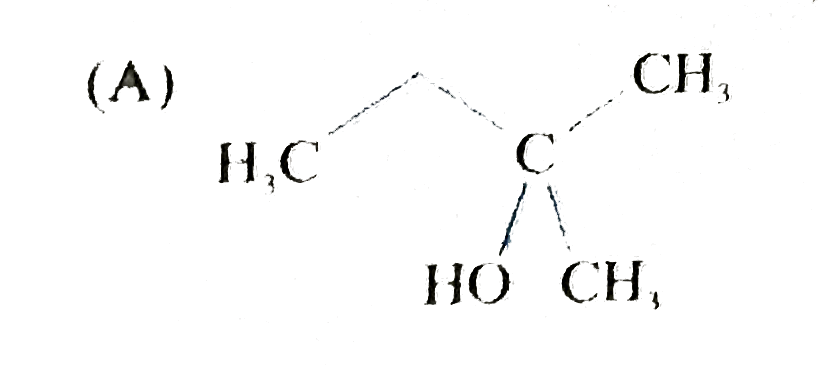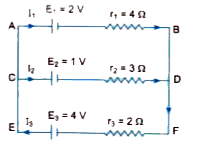State Markownikov's rule. Using this rule, write the reaction of propene with
HCl
Step-by-Step Solution:
1. State Markownikov's Rule:
Markownikov's rule states that in the addition reaction of alkenes and alkynes, the hydrogen atom (proton) is added to the carbon atom that already has the greater number of hydrogen atoms attached to it. This means that during the addition of HX (where X is a halogen) to an alkene, the more substituted carbon will receive the halogen, while the less substituted carbon will receive the hydrogen.
2. Identify the Structure of Propene:
Propene (C₃H₆) has the structural formula CH₃-CH=CH₂. In this structure, the first carbon (C1) has 3 hydrogen atoms, the second carbon (C2) has 2 hydrogen atoms, and the third carbon (C3) has 2 hydrogen atoms.
3. React Propene with HCl:
When propene reacts with HCl, we need to determine where the hydrogen (H) and chlorine (Cl) will be added based on Markownikov's rule. According to the rule, the hydrogen will be added to the carbon that has more hydrogen atoms already attached.
4. Apply Markownikov's Rule to Propene:
In propene, the C1 (CH₃) has 3 hydrogen atoms, while C2 (CH) has 2 hydrogen atoms. Therefore, according to Markownikov's rule, the hydrogen from HCl will attach to C1, and the chlorine will attach to C2.
5. Write the Product:
The product of this reaction will be 2-chloropropane, which can be represented as CH₃-CH(Cl)-CH₃.
Final Reaction:
The reaction can be summarized as:
CH3-CH=CH2+HCl→CH3-CH(Cl)−CH3
This product is known as 2-chloropropane.
Markownikov's rule states that in the addition reaction of alkenes and alkynes, the hydrogen atom (proton) is added to the carbon atom that already has the greater number of hydrogen atoms attached to it. This means that during the addition of HX (where X is a halogen) to an alkene, the more substituted carbon will receive the halogen, while the less substituted carbon will receive the hydrogen.
Propene (C₃H₆) has the structural formula CH₃-CH=CH₂. In this structure, the first carbon (C1) has 3 hydrogen atoms, the second carbon (C2) has 2 hydrogen atoms, and the third carbon (C3) has 2 hydrogen atoms.
When propene reacts with HCl, we need to determine where the hydrogen (H) and chlorine (Cl) will be added based on Markownikov's rule. According to the rule, the hydrogen will be added to the carbon that has more hydrogen atoms already attached.
In propene, the C1 (CH₃) has 3 hydrogen atoms, while C2 (CH) has 2 hydrogen atoms. Therefore, according to Markownikov's rule, the hydrogen from HCl will attach to C1, and the chlorine will attach to C2.
The product of this reaction will be 2-chloropropane, which can be represented as CH₃-CH(Cl)-CH₃.
The reaction can be summarized as:
CH3-CH=CH2+HCl→CH3-CH(Cl)−CH3
This product is known as 2-chloropropane.
Topper's Solved these Questions
- BOOK - CBSE COMPLEMENTARY MATERIALCHAPTER - HYDROCARBONSEXERCISE - 5- MARK QUESTION13videos
HYDROCARBONS
- BOOK - CBSE COMPLEMENTARY MATERIALCHAPTER - HYDROCARBONSEXERCISE - UNIT TEST16videos
HYDROCARBONS
- BOOK - CBSE COMPLEMENTARY MATERIALCHAPTER - HYDROCARBONSEXERCISE - 2- MARK QUESTION28videos
HYDROCARBONS
- BOOK - CBSE COMPLEMENTARY MATERIALCHAPTER - EQUILIBRIUM EXERCISE - UNIT TEST6videos
EQUILIBRIUM
- BOOK - CBSE COMPLEMENTARY MATERIALCHAPTER - HYDROGENEXERCISE - Unit Test11videos
HYDROGEN
Similar Questions
Knowledge Check
- Question 1 - Select One
Allen's rule state that
AMammals from colder climates have larger body size to minimize heat lossBFishes growing in polar region have large number of vertebrae to maximize heat lossCMammals from colder climates generally have extremities to minimize heat lossDBirds found in colder geographical zone have broader wings to maximize surface area - Question 2 - Select One
According to Markownikoff's rule, the major product formed by addition of HBr with propene is
A1-bromopropaneB1-bromo, 1-methyl ethaneC2-bromopropaneD2, 2-dibromopropane - Question 3 - Select One
Acid catalysed hydration of alkene give alcohol. In thic reaction addition of water takes place according to Markownikov's rule. Since intermediate carbocation is formed in this reaction, rearrangment of carbocation takes place. In oxymercuration-demercuration reaction hydration of alkene takes place according to markownikov's rule. Oxymercuratio-demercuration-dermercuration no rearrangement is possible. in hydroboration-oxidation hydration of alkene takes place according to anti marjownikow's addition. in HBO reaction rearrangement is not possible. both in oxymercuration-demercuation and hydroboration-oxidation, intermediate carbocation are not formed.
Q. The product formed in the following reaction is:
 PruductA
PruductA B
B C
C DH2C∣OH−CH2C∣CH3H−CH3
DH2C∣OH−CH2C∣CH3H−CH3
State Hardy schulze rule.
View SolutionUse markownikov's rule and predict the products of the following reaction:
(i). HCl with CH3CCl=CH2
(ii). HCl with CH3CH=C(CH3)2.View SolutionIn the presence of peroxide addition of HBr to propene takes place according to anti Markownikoff's rule but peroxide effect is not seen in the case of HCl and HI. Explain.
View SolutionIn the presence of peroxide addition of HBr to propene takes place according to anti Markownikoff's rule but peroxide effect is not seen in the case of HCl and HI. Explain.
View SolutionAcid catalysed hydration of alkene give alcohol. In thic reaction addition of water takes place according to Markownikov's rule. Since intermediate carbocation is formed in this reaction, rearrangment of carbocation takes place. In oxymercuration-demercuration reaction hydration of alkene takes place according to markownikov's rule. Oxymercuratio-demercuration-dermercuration no rearrangement is possible. in hydroboration-oxidation hydration of alkene takes place according to anti marjownikow's addition. in HBO reaction rearrangement is not possible. both in oxymercuration-demercuation and hydroboration-oxidation, intermediate carbocation are not formed.
Q. CH3−C≡C−H(Sia)2HB−−−−−−−→H2O2/OH−A, A isView Solution


